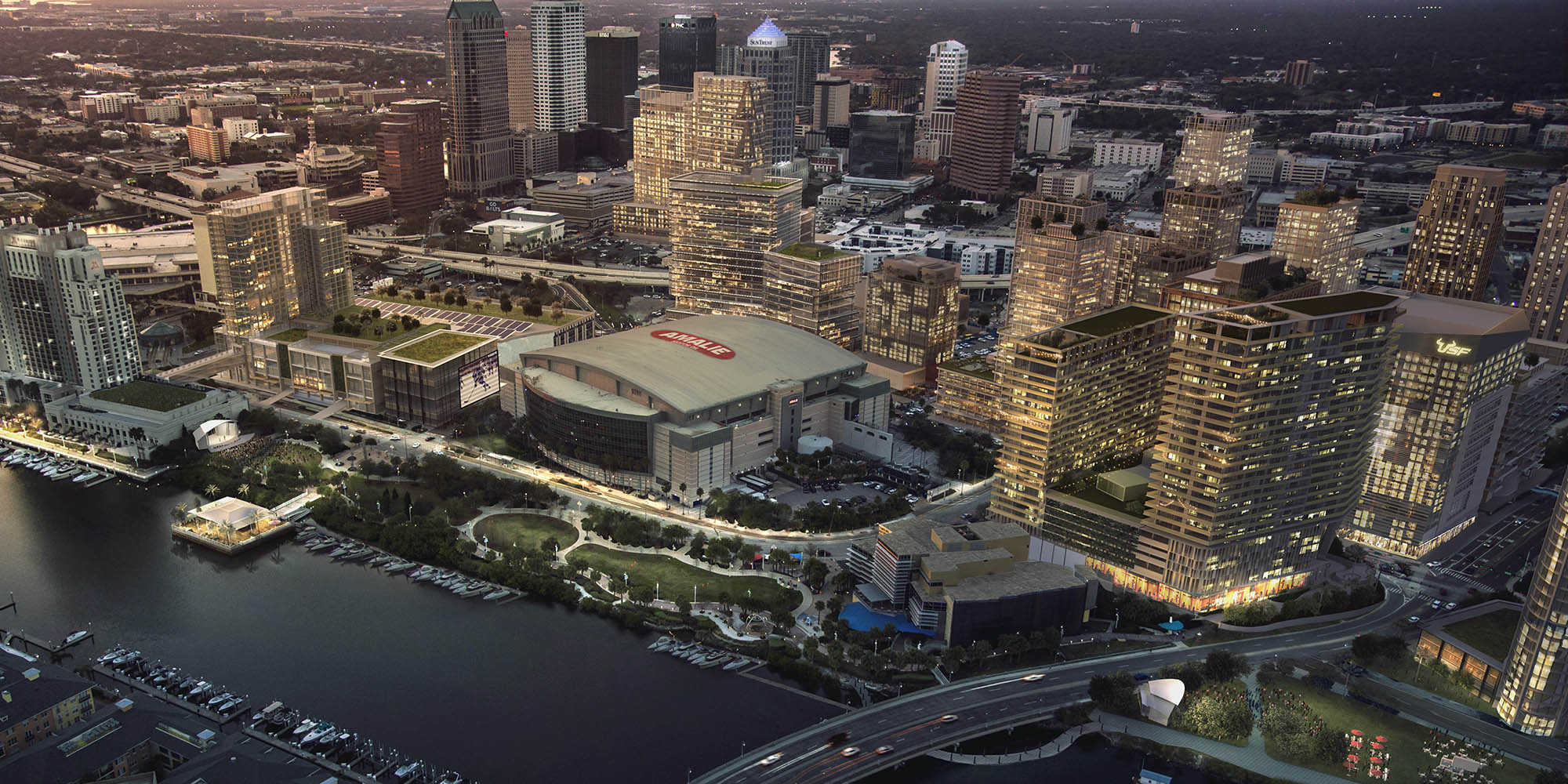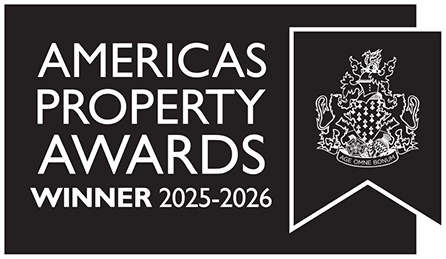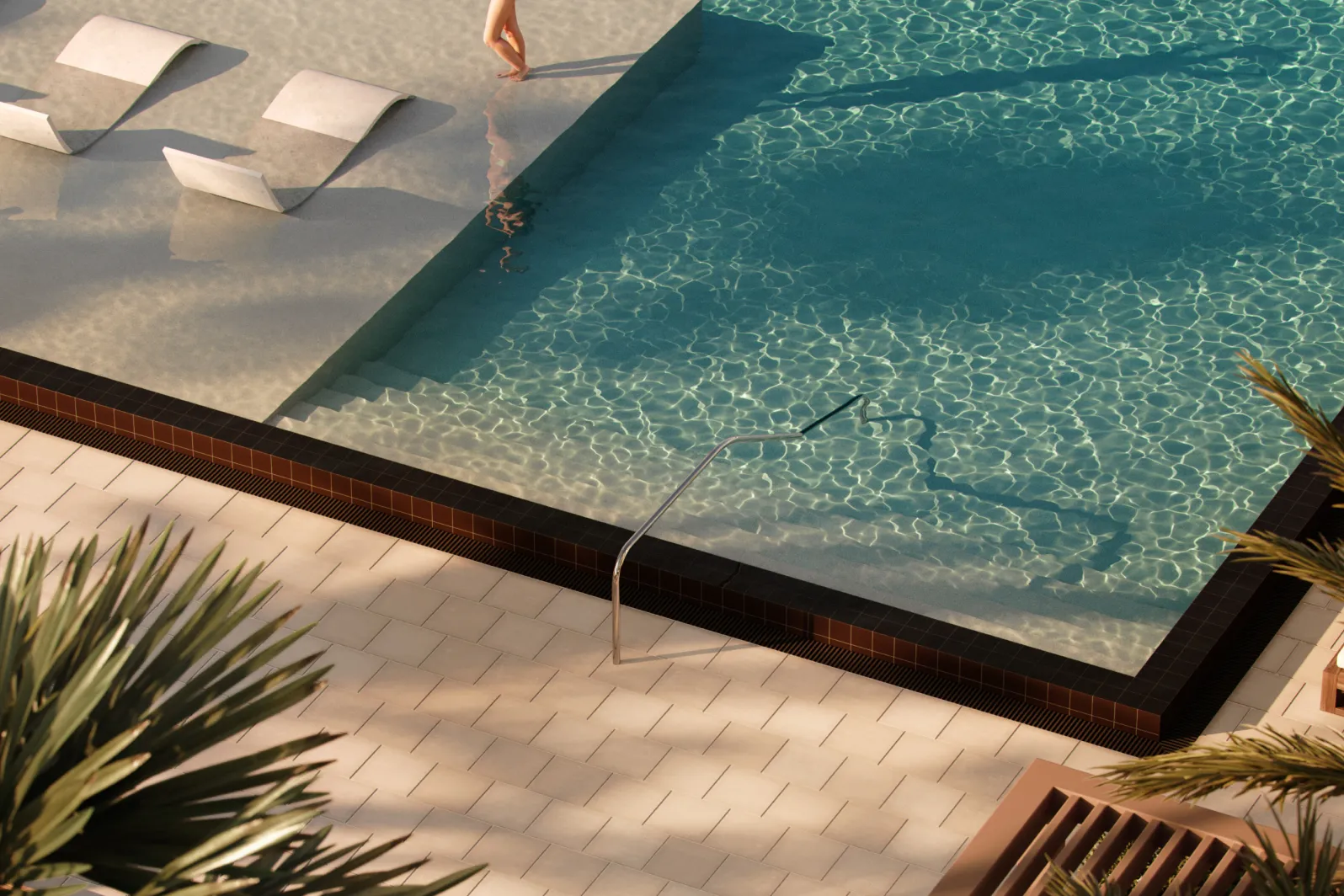Arguably Tampa’s most ambitious project, Water Street Tampa is a $3.5-billion walkable, urban community being built on 56 acres in the downtown waterfront area.
Imagine living within a 15-minute walk or bike ride from everything you need in a day. This is the future of many of Tampa’s hottest developments.
“Mini cities” are emerging from the ground. They’re part of a national trend creating taller, denser neighborhoods that blend home, office, restaurants, shops and entertainment all into one master-planned community. And it’s a concept that looks good on Tampa.
Compact, mixed-use developments give people more time doing what they want and less time fighting traffic. It’s the next level of quality of life, and it redefines and challenges what a community could be.
Tampa has several major city-within-a-city developments in the works, including Water Street Tampa, The Heights, Westshore Marina District, Midtown Tampa and Gas Worx.
“They all create their own sense of place,” says Vince Chillura, first senior vice president of commercial real estate for Valley National Bank, involved in all five of those communities. “Every project has its own mojo.”
Key players have realized the potential of these previously underutilized, vacant or blighted pockets of Tampa, transforming them into something special while better connecting the city and elevating its status.
“When you string interconnected neighborhoods, it creates this super cool place to be that allows Tampa to be competitive with the Austin, the Nashville,” says Darryl Shaw, owner of Ybor City’s Gas Worx development.
Local experts share their takes on Tampa’s current state of commercial real estate, as well as their forecasts and major project updates.
A Transformation
Seasoned Tampa natives and longtime area developers are quick to admit that Tampa wasn’t always the commercial real estate hotbed it is today. Tampa has grown and changed significantly in its 172 years, with riverfront development being prioritized the past 20 years, accelerating an avalanche of other recent developments. Just five years ago, the Riverwalk trail reached substantial completion.
Tampa used to rely on back-office jobs and call centers. Now new startups and companies are launching with enough support and resources to sustain them.
Shopping centers have been reinvented from malls and grocery-anchored centers to outdoor concepts centered around neighborhoods, such as SoHo and Hyde Park Village.
“The right type of development is happening in Tampa,” says Chillura, whose team had its best year ever. “We have a lot of momentum here — the right types of projects and smart people.”
Many longtime or native Tampanians describe the city’s change as night and day, and as happening nearly overnight.
“The city has transformed and is unrecognizable from the Tampa of my youth in a fantastic way,” says Lee Schaffler, chief portfolio officer at Strategic Property Partners, the developer of Water Street Tampa, a joint venture between investor and Tampa Bay Lightning owner Jeff Vinik and Bill Gates’ Cascade Investment to create 56-acre mixed-use development downtown.
The budding art and culture scene, job growth, in-migration, an expanding airport, major (winning!) sports teams, coveted weather, waterfront living and low taxes also add to the mix.
“This package of elements will continue to be a driver for Tampa and it will be recognized as a leading market,” says Noah Breakstone, managing partner and CEO of BTI Partners and master developer of the Westshore Marina District. “It’s an exciting time. It’s only going to continue to accelerate.”
Several experts credited the City of Tampa and Hillsborough County for helping lay the foundation for success with their visionary leadership, business friendliness and strong partnerships.
“The Tampa Bay real estate market is on fire,” says Andrew Wright, CEO of Franklin Street and managing partner with Ally Capital Group, implementing a $20-million office and retail center in the Westshore Business District.
Tampa delivered about 1.8 million square feet of office space in the 12 months from September 2020 through August, with another 375,000 square feet currently under construction, Wright says.
“All of this new inventory marks a huge shift for our office market after a long period of little office development,” Wright says. “Tampa has long lacked the large blocks of Class A office space needed to attract major companies, but we’re now seeing more deals with international names, like Pfizer, which is opening a 100,000-square-foot business hub in Tampa Heights, as well as numerous tech companies, like ID.me, which are helping put Tampa on the map as a tech center.”
Case in point, Forbes just named Tampa the No. 1 Emerging Tech City in the U.S.
“Multifamily development also continues to move forward at a rapid pace,” Wright says.
Tampa Bay gained 7,726 apartment units in the 12 months from September 2020 to August, with another 7,891 units currently underway, Wright says.
“However, despite all this new construction, demand is still significantly outweighing supply, as people continue migrating to our area from New York, California and other higher-density areas,” Wright says. “Although apartment rents are up 20% for some submarkets and product types, which is a result of both increased construction costs and the high demand, units are being quickly absorbed and the rental market remains extremely competitive.”
Quite simply, Tampa is having its moment.
“The market itself right now is very active and very hot,” Shaw says. “We stay at or close to 100% leased in our residential units in Ybor. We have a wait list.”
Nick Haines, CEO at The Bromley Companies, the master developer of 23-acre, mixed-use Midtown Tampa, concurs. “Tampa’s a core market for us and there’s never been a more exciting time.”
Turning Heads
Clearly, when it comes to commercial real estate and development in Tampa, the city has already arrived. But it’s on the verge of no longer being the best-kept secret.
Local developers are getting inquiries from major national and global investors and companies like never before.
“National restaurants are clamoring,” says Schaffler, a year into Water Street Tampa’s lease of restaurants. “National retailers want to be first to market here. Tampa is on the map. There are large institutional investor groups showing interest in Tampa that have never been on the radar.”
Doug Badia, principal at Pure Properties Group, a partner in The Heights development, has had a similar experience.
“Not a week goes by that we’re not getting multiple out-of-state inquiries regarding retail, restaurant and/or office,” Badia says.
“It’s one of the most exciting cities in the U.S. to develop right now,” Haines says. “There’s really nowhere else in the U.S. I’d rather be developing a $500 million project.”
Strong Forecast
Experts share overwhelmingly positive projections about the future of commercial real estate and development in Tampa.
“Tampa’s best days are really ahead of it,” Haines says. “We’re in the early innings of significant growth for the city.”
Schaffler agrees, predicting that growth, in-migration and demand drivers will continue.
“Between our relentless population growth, strong economy and stable employment market, Tampa Bay’s commercial real estate market is in a very healthy position,” Wright says.
Of course, there are some challenges to pay attention to, like inflation creating supply chain issues for construction materials, causing project delays.
“While there are many ripe opportunities out there in the Tampa Bay commercial real estate market, investors and occupiers should plan to work some flexibility into their strategies,” Wright says.
Chillura emphasizes the importance of continued good leadership and thoughtful planning to prevent overbuilding.
Haines also cautions that Tampa needs to continue to make progress with affordable housing “so growth doesn’t make the city unlivable.”
Heron opened in March with 420 apartments in two towers; Publix’s GreenWise Market opened in August at Heron’s base.
In the Works
Water Street Tampa
Arguably Tampa’s most ambitious current project at $3.5 billion, Water Street Tampa is a walkable, urban community with 10 projects totaling 9 million square feet on 56 acres in the downtown waterfront area surrounding Amalie Arena.
“The scale of the project is unparalleled,” Schaffler says. “Only a handful of groups in the world would have the capacity to build 10 buildings at once.”
It includes 3,500 new rental and for-sale residences (including the city’s first hotel-branded residences), 1 million square feet of retail and cultural spaces (including Publix Greenwise Market, which opened in August; and Sparkman Wharf, which opened in 2018 at 65,000 square feet of retail), 2 million square feet of new office space, including Tampa’s first trophy office tower in nearly 30 years; 692 new and 727 renovated hotel rooms, (including The Tampa EDITION, the city’s first five-star hotel, planned to open in early 2022.
Water Street Tampa will be home to the largest collection of hotel rooms and meeting spaces in the Tampa Bay area.); and 13 acres of new public green space and a brand-new street grid.
Construction on the first phase is planned for completion by the end of the first quarter of 2022. Phase 1 of retail is over 90% committed within a little over a year; every building has active ground-floor retail.
Of note, Water Street is the first neighborhood in the world to receive an International WELL Building Institute certification.
Through SPP, Water Street is backed by Vinik, who bought the Tampa Bay Lightning in 2010, realized how underutilized the area surrounding their stadium was, and partnered with Cascade Investment (controlled by Gates) to make something special of it. Water Street fills the gaps between several other active pockets of Tampa.
“We connected Channelside to the CDBG to Harbour Island and on and on,” Schaffler says. “There was this giant missing connection between them. Our project filled that in and became the connection point. We’re the hole in the doughnut.”
In August, cybersecurity leader ReliaQuest announced plans to relocate its corporate headquarters to 120,000 square feet of Thousand & One, Water Street’s flagship office building, signaling Tampa’s growing tech industry.
Also unique are the project’s wide (up to 45-foot) pedestrian pathways, which Schaffler describes as most of the project’s intellectual capital.
“The No. 1 thing is our sidewalks,” Schaffler says. “We are in the midst of creating one of the grand pedestrian avenues of the U.S. and the world.”
The Heights District is shaping up to be a dense, urban waterfront community connected to downtown.
The Heights
Tampa’s first suburb, The Heights, is undergoing a major makeover. Located just north of downtown, the 50-acre modernized mixed-use neighborhood along the river is seeing tremendous activity.
In 2018, Armature Works opened as a 73,000 square-foot, mixed-use property, housing an event center, office space, market and several full-service restaurants such as Steelbach, Oak & Ola and M. Bird. This was followed in 2019 by The PEARL, the first luxury apartments in The Heights, including 314 residential units and 28,500 square feet of street-level commercial space. Merchants include Rocca Italian, Strand Hill Public, Xochitl Mexican, Frenchies Nails, Rejuv Salon, Jeni’s Ice Cream.
The 2020 expansion of The Heights delivered the Heights Union, comprising two 150,000-square foot luxury Class-A office buildings, which include major tenants such as Pfizer and Axogen. Most recently, Sprouts Farmers Market announced that it will open this fall. To date, small shops, street-level merchants following Sprouts include Truist Bank, Escapology, and F45 Training.
“Our primary focus continues to be working with Chas Bruck, Adam Harden and the team at Soho Capital to further evolve The Heights District into a dense, urban, super-regional mixed-use waterfront neighborhood, connected to Downtown Tampa,” Pure Properties Group’s Badia says.
Additional phases are anticipated to be completed within about two years. It will continue to expand into Seminole Heights and Downtown, filling in the gaps.
“The Heights was somewhat of a blighted area and after the group’s conscious efforts, it became something special very quickly,” Chillura says. “They were so wildly successful in the first phase. There clearly is a demand.”
Westshore Marina District is a nearly complete $700-million project transforming an industrial boat yard into a 52-acre mixed-use community. Pictured, Marina Pointe condos include a private marina and are under construction with an expected opening next summer.
Westshore Marina District
A former industrial boat yard in South Tampa has become a thriving, 52-acre mixed-use amenity-rich community at the intersection of Gandy and West Shore boulevards with 1.5 miles of bay front.
Ten years in the making, the $700,000 project broke ground in 2017 and opened in phases starting in 2018. Today, the district nearly is complete.
Marina Landings, the town center, is almost 20,000 square feet of service-oriented retail, including Crave spa, Cru cellars and Duckweed Urban Grocer, with celebrity chef Fabio Viviani’s second Chuck Lager America’s Tavern opening soon. The marina is another a focal point, which also offers urban trails and parks with public art.
As for residential there are currently under 1,000 homes. Marina Pointe luxury condos are under construction with the first residents slated to move in next summer. The condos offer direct access to the water and include a private marina. Other residential projects are in the works as well, with two multifamily communities completed — Bainbridge and the Town by Related Group. WCI/Lennar already completed a majority of its townhome community.
The district sets itself apart as a quieter, more tranquil community with easy access to Downtown Tampa, the airport and St. Petersburg.
“Our focus is combining residential and commercial development to bring quality of life and peace to the people living in the community,” Breakstone says.
Midtown Tampa’s 23 acres of mixed-use development will have retail, Class A office space, residences, lakeside trails, a town center and a dog park. Pictured, Aloft and Element, among Tampa’s first dual-branded hotels, offer 230 rooms and a shared rooftop lounge and pool.
Midtown Tampa
In the middle of it all, 23-acre Midtown Tampa, acquired over about 20 years, is wrapping up 1.8 million square feet of construction at the intersection of Dale Mabry and I-275.
It will have 28 retailers, with about a third of those already open and construction being wrapped up, as well as 225,000 square feet of Class A office space, a hotel, residences, lakeside trails, a town center and a dog park. REI Co-op opened in March with 23,000 square feet of outdoor gear. Joffrey’s Coffee & Tea opened in August, the area’s largest Whole Food Market opened in July, and Tampa’s first Shake Shack opened in June.
“We saw lines down the streets on opening day,” Haines said. “People are so hungry for these concepts.”
The Sal Y Mar hotel rooftop bar and lounge opened in February, offering panoramic city views, and 390 apartments opened in spring and were about 54% occupied and 74% leased as of early September.
The 50-acre mixed-use Gas Worx district plans to fill in the gap between South Ybor and Downtown’s Channel District. Pictured, Casa Gómez is planned as a retail and office property featuring a rooftop restaurant and bar overlooking the Ybor City Historic District.
Gas Worx
It may not be in the spotlight yet due to its infancy, but Chillura says the 50-acre mixed-use Gas Worx district might be Tampa’s most important development.
Filling the gap between South Ybor and Downtown’s Channel District, the project also connects to The Heights.
Gas Worx is a working name inspired by the original gas works plant on the site, founded in 1895 by the Tampa Gas Company. The company constructed an iconic gas tank, several stories high, on their property at 13th Street and 1st Avenue (today’s Channelside Drive and Adamo Drive).
Since 2014, Shaw has been assembling land for the project. He partnered with Kettler to plan 3 million to 5 million square feet of development, proposing nearly 5,000 apartments, over 500,000 square feet of office and 140,000 square feet of retail. They met with planners, submitted for zoning and hope to start construction around the second quarter of 2022.
Tampa Park Apartments is planned to be the first project to come out of the ground with 724 units and 20,000 square feet of retail. From there, Shaw sees focusing on development block by block. To boost the area’s inventory of green space, he envisions replacing the roundabout with a large public park and straightening 4th Avenue.
Construction was planned to begin this month on a dog park and cafe on 4th Avenue and 18th Street. Plans also are in the works for a pedestrian trail to connect to Water Street and Riverwalk.
Shaw hopes to capitalize on Ybor’s existing rhythmic layout, walkability and proximity to all the interstates to help expand its offerings and see improved transportation. Shaw is keen on preserving the history and cultivating a diverse, thriving community.
“It’s always been, ‘When’s Ybor really going to boom?’ Shaw says. “I think the key to achieving that is getting a lot more people living in the district.”
Creating more workforce housing will be paramount, he says. Shaw’s already completed several renovations, including the former Buchman Department Store to retail and residences, and the old Oliva Cigar Factory into residential; and Pedroso’s change to a restaurant, brewery and 33 residential units should be completed this fall.




